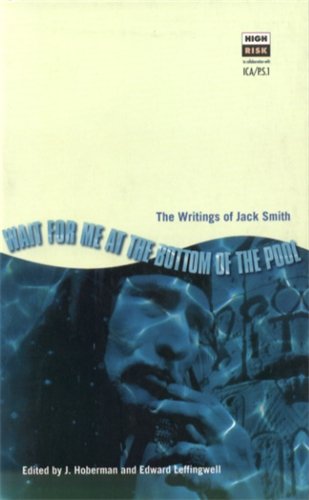David Novak: Japanoise: Music at the Edge of Circulation (2013)
Filed under book | Tags: · aesthetics, ethnomusicology, feedback, improvised music, japan, listening, music, music criticism, music history, musicology, noise, performance, technology

“Noise, an underground music made through an amalgam of feedback, distortion, and electronic effects, first emerged as a genre in the 1980s, circulating on cassette tapes traded between fans in Japan, Europe, and North America. With its cultivated obscurity, ear-shattering sound, and over-the-top performances, Noise has captured the imagination of a small but passionate transnational audience.
For its scattered listeners, Noise always seems to be new and to come from somewhere else: in North America, it was called ‘Japanoise.’ But does Noise really belong to Japan? Is it even music at all? And why has Noise become such a compelling metaphor for the complexities of globalization and participatory media at the turn of the millennium?
In Japanoise, David Novak draws on more than a decade of research in Japan and the United States to trace the ‘cultural feedback’ that generates and sustains Noise. He provides a rich ethnographic account of live performances, the circulation of recordings, and the lives and creative practices of musicians and listeners. He explores the technologies of Noise and the productive distortions of its networks. Capturing the textures of feedback—its sonic and cultural layers and vibrations—Novak describes musical circulation through sound and listening, recording and performance, international exchange, and the social interpretations of media.”
Publisher Duke University Press, Durham, 2013
Sign, Storage, Transmission series
Creative Commons BY-NC-ND 3.0 License
ISBN 9780822353799, 0822353792
x+292 pages
via author
Reviews: Shaun McKenna (Japan Times, 2013), Scott McLemee (Inside Higher Ed, 2013), Nana Kaneko (Ethnomusicology Rev, 2014), Andrés García Molina (Current Musicology, 2014), Max Ritts (Society+Space, 2014), Jonathan Service (Japan Forum, 2014), Rosemary Overell (Perfect Beat, 2014), Patrick Valiquet (Popular Musicology, 2014), Owen Coggins (Harts & Minds, 2014), Seth Mulliken (Sounding Out!, 2014), E. Taylor Atkins (Asian Music, 2015), Shelina Brown (Notes, 2015), Jennifer Milioto Matsue (Am Anthropologist, 2015), Carolyn S. Stevens (Am Ethnologist, 2015), Christopher Tonelli (Sound Studies, 2016), Benjamin Harley (Enculturation, 2016), Etienne RP (2017).
Book website, with supplemental media
Publisher
WorldCat
Für Augen und Ohren: von der Spieluhr zum akustischen Environment. Objekte, Installationen, Performances (1980) [German]
Filed under catalogue, video | Tags: · electronic music, experimental music, music, music history, musical instruments, musique concrète, performance, sound, sound art

Catalogue for a large-scale exhibition of sound art and mechanical and electronic music devices. Curated by René Block and Nele Hertling for the Akademie der Künste, West-Berlin, the exhibition included seven large gallery halls of sound sculpture, early electronic devices from the 1930s and 1940s, and sound environments.
With essays by Dieter Krickeberg, Siegfried Wendel, Wolf D. Kuehnelt, Juan Allende-Blin, Billy Klüver, René Block; chronology by Helmut Danninger.
Edited by René Block, Lorenz Dombois, Nele Hertling, and Barbara Volkmann
Publisher Akademie der Künste, Berlin, 1980
ISBN 3883319147
312 pages
Documentary directed by Detlef Michael Behrens, 1980
German language
33 min
Radio report (Charles Amirkhanian, KPFA-FM, 1980, EN)
Documentary: MP4 (107 MB, Vimeo)
Catalogue: PDF (88 MB, no OCR)
Jack Smith: Wait For Me at the Bottom of The Pool: The Writings of Jack Smith (1997)
Filed under book | Tags: · cinema, film, film criticism, performance

“During thirty years of activity as a filmmaker, photographer and performer, Jack Smith produced a body of creative, antic writing that intersects and transcends the genres of hothouse fantasy, criticism and social comment. Bringing together long unavailable essays, performance scripts, interviews and other material, Wait for Me at the Bottom of the Pool reveals the ideas and personality of an artist whose distinctive vision has influenced generations of filmmakers and performance artists. With caustic wit, Smith praises the performances of Maria Montez as well as the sculpture of Walter de Maria, examines the cult success of Reefer Madness and the uses of pornography, and discusses the perils of democracy, the evils of property and the police state, art history and architecture.”
Edited by J. Hoberman and Edward Leffingwell
Publisher High Risk Books, with Institute of Contemporary Art/P.S. 1 Museum, New York, 1997
ISBN 1852424281, 9781852424282
177 pages
PDF (16 MB)
Comment (0)
